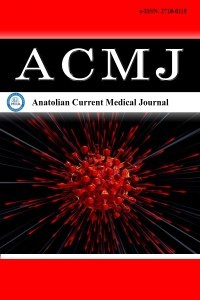1.
Jin J, Li J, Hou M, et al. A shifted urinary microbiota associatedwith disease activity and immune responses in rheumatoidarthritis. Microbiol Spectr. 2023;11(3):1-12.
2.
Puntis D, Malik S, Saravanan V, et al. Urinary tract infectionsin patients with rheumatoid arthritis. Clin Rheumatol. 2013;32(3):355-360.
3.
Bergmans BJM, Gebeyehu BY, van Puijenbroek EP, et al.Infections in biological and targeted synthetic drug use inrheumatoid arthritis: where do we stand? a scoping review andmeta-analysis. Rheumatol Ther. 2023;10(5):1147-1165.
4.
Smolen JS, Landewé RBM, Bergstra SA, et al. EULARrecommendations for the management of rheumatoid arthritiswith synthetic and biological disease-modifying antirheumaticdrugs: 2022 update. Ann Rheum Dis. 2023;82(1):3-18.
5.
Radu A-F, Bungau SG. Management of rheumatoid arthritis: anoverview. Cells. 2021;10(11):2857.
6.
Furst DE. The risk of infections with biologic therapies forrheumatoid arthritis. Semin Arthritis Rheum. 2010;39(5):327-346.
7.
Listing J, Gerhold K, Zink A. The risk of infections associatedwith rheumatoid arthritis, with its comorbidity and treatment.Rheumatol (Oxford). 2013;52(1):53-61.
8.
Cipriani P, Berardicurti O, Masedu F, et al. Biologic therapiesand infections in the daily practice of three Italian rheumatologicunits: a prospective, observational study. Clin Rheumatol. 2017;36(2):251-260.
9.
Flores-Mireles AL, Walker JN, Caparon M, Hultgren SJ. Urinarytract infections: epidemiology, mechanisms of infection andtreatment options. Nat Rev Microbiol. 2015;13(5):269-284.
10.
Jeong S, Jeon K, Lee N, Park MJ, Song W. Changing genotypicdistribution, antimicrobial susceptibilities, and risk factors ofurinary tract infection caused by carbapenemase-producingpseudomonas aeruginosa. Ann Lab Med. 2024;44(1):38-46.
11.
Consani Fernández SA, Díaz Cuña CL, Fernández Rey L, RostánSellanes S, Maciel Oleggini G, Facal Castro JA. Infectionsin systemic autoimmune diseases. Reumatol Clín (Eng Ed.).2021;17(10):582-587.
12.
Wang D, Yeo AL, Dendle C, Morton S, Morand E, Leech M.Severe infections remain common in a real-world rheumatoidarthritis cohort: a simple clinical model to predict infection risk.Eur J Rheumatol. 2021;8(3):133-138.
13.
Huang WN, Chuo CY, Lin CH, et al. Serious infection ratesamong patients with select autoimmune conditions: a claims-based retrospective cohort study from Taiwan and the USA.Rheumatol Ther. 2023;10(2):387-404.
14.
Sharma C, Keen H. Ten-year retrospective review of the incidenceof serious infections in patients on biologic disease modifyingagents for rheumatoid arthritis in three tertiary hospitals inWestern Australia. Intern Med J. 2019;49(4):519-525.
15.
Dixon WG, Watson K, Lunt M, Hyrich KL, Silman AJ, SymmonsDPM. Rates of serious infection, including site-specific andbacterial intracellular infection, in rheumatoid arthritis patientsreceiving anti-tumor necrosis factor therapy: Results from theBritish Society for Rheumatology Biologics Register. ArthritisRheum. 2006;54(8):2368-2376.
16.
Listing J, Strangfeld A, Kary S, et al. Infections in patients withrheumatoid arthritis treated with biologic agents. ArthritisRheum. 2005;52(11):3403-3412.
17.
He B, Li Y, Luo WW, et al. The risk of adverse effects of TNF-αinhibitors in patients with rheumatoid arthritis: a network meta-analysis. Front Immunol. 2022;13:1-16.
18.
Dey M, Bechman K, Zhao S, et al. Infection profile of immune-modulatory drugs used in autoimmune diseases: analysis ofsummary of product characteristic data. RMD Open. 2022;8(2):1-8.
19.
Quach LT, Chang BH, Brophy MT, Thwin SS, Hannagan K,O’Dell JR. Rheumatoid arthritis triple therapy compared withetanercept: Difference in infectious and gastrointestinal adverseevents. Rheumatol (Oxford). 2017;56(3):378-383.
20.
Balanescu AR, Citera G, Pascual-Ramos V, et al. Infections inpatients with rheumatoid arthritis receiving tofacitinib versustumour necrosis factor inhibitors: results from the open-label,randomised controlled ORAL Surveillance trial. Ann Rheum Dis.2022;81(11):1491-1503.
21.
Yun H, Xie F, Delzell E, et al. Comparative risk of hospitalizedinfection associated with biologic agents in rheumatoid arthritispatients enrolled in medicare. Arthritis Rheumatol. 2016;68:56-66.
22.
Bechman K, Halai K, Yates M, et al. British Society for RheumatologyBiologics Register for Rheumatoid Arthritis Contributors Group;Hyrich KL, Galloway JB. Nonserious Infections in PatientsWith Rheumatoid Arthritis: Results From the British Societyfor Rheumatology Biologics Register for Rheumatoid Arthritis.Arthritis Rheumatol. 2021;73(10):1800-1809.
23.
Chiu YM, Chen DY. Infection risk in patients undergoingtreatment for inflammatory arthritis: non-biologics versusbiologics. Expert Rev Clin Immunol. 2020;16(2):207-228.
24.
Foxman B. The epidemiology of urinary tract infection. Nat RevUrol. 2010;7(12):653-660.
25.
Pérez-Sola MJ, Torre-Cisneros J, Pérez-Zafrilla B, Carmona L,Descalzo MA, Gómez-Reino JJ. Infecciones en pacientes tratadoscon antagonistas del factor de necrosis tumoral: incidencia,etiología y mortalidad en el registro BIOBADASER. Med Clin(Barc). 2011;137(12):533-540.

